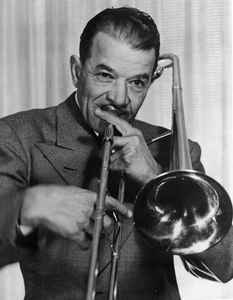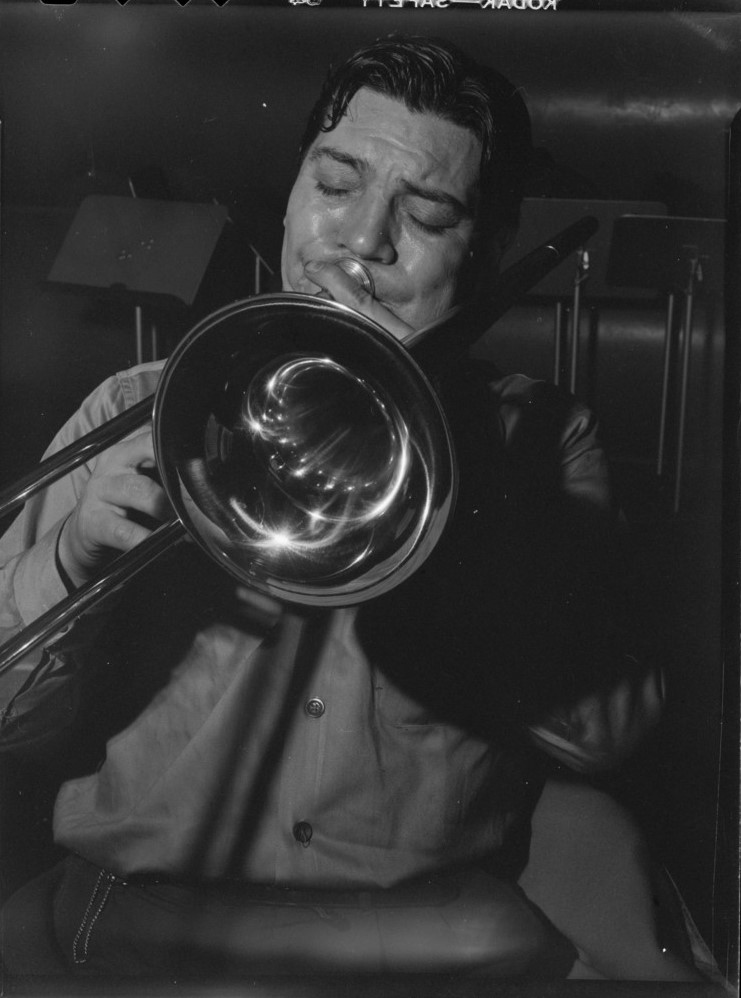Dixieland
Origin of Dixieland
Sometimes referred to as "hot jazz", dixieland was the first jazz genre that emerged from ragtime and was influenced by the blues and marching bands. Dixieland developed in the early twentieth century in the city of New Orleans. A dixieland band usually consisted of a trombonist, cornetist/trumpet player, clarinetist, tuba/bass player, banjo/piano player, and a drummer. The trombone was known as the "tailgate trombone" because during parades, trombonists usually stayed in the back of the band or the trailer hauling the band in order to have enough room for their slide. The trombonist was responsible of outlining the chords or play a countermelody. Glissandos and growl effects were common in this era.
Influential Trombonists
Kid Ory

Born in 1886, Edward "Kid" Ory started his career as a trombonist in around 1910. Known as the king of tailgate trombone, Ory's style of playing consisted of staccatos, glissandos, growls, and smears. Ory possessed a rough tone, and he utilized simple melodic solos only by using a few notes. He has led several bands which included Joe "King" Oliver and Louis Armstrong.
Kid Ory's Creole Jazz Band
While this was recorded in 1954, this recording still produces the
feel of dixieland. Notice how the trombonist uses the glissandos to
set up each chord while responding to the trumpet player. This
recording features Kid Ory on trombone, Alvin Alcorn on trumpet,
George Probert on clarinet, Barney Kessel on guitar, Don Ewell on
piano, Ed Garland on bass, and Minor Hall on drums.
Jack Teagarden

Born in Vernon, Texas on August 20th, 1905, Weldon Leo "Jack" Teagarden was a jazz trombonist and a singer. In 1921, he joined Peck Kelley's band at the age of only sixteen years old! Instead of focusing on the tailgate style of playing that was traditional with the style of dixieland, he treated the trombone as a lyrical instrument. Combining this style with lip trills and the use of the upper register, he became one of the most prominent trombone players in his generation.
Jack Teagarden and His All Star Group
This recording of Jack Teagarden playing and singing the song "Basin
Street Blues" is a perfect example of his approach to dixieland
tunes. Rather than playing glissandos, Teagarden used difficult,
lyrical phrases in his solo. His singing is also very laid-back and
easy-going.